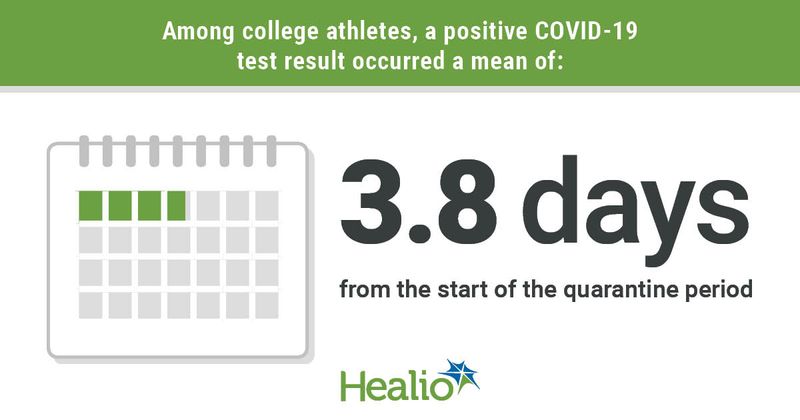Collegiate athletes may benefit from a shorter quarantine period after COVID-19 exposure
Given the low proportion of collegiate athletes who tested positive for COVID-19 after 10 days of quarantine, a shorter quarantine period may improve adherence without increasing infection risk, according to a study by the CDC and NCAA.
From June to October 2020, researchers analyzed data on 1,830 quarantined athletes from 24 colleges and universities. Football (46.2%), track and field (10.4%) and soccer (6.6%) were the most common sports included. Social gatherings (40.7%), roommates (31.7%) and athletic activities (12.7%) accounted for most of exposures.

According to the study, 620 athletes received a positive reverse transcription–polymerase chain reaction test result during the quarantine period of 14 days. Positive test results occurred a mean of 3.8 days from the start of quarantine, with 303 athletes (48. 9%) receiving a positive result by day 2 and 453 athletes (73.1%) receiving a positive result by day 5.
For athletes who remained negative for COVID-19 at day 5, researchers determined the estimated probability of a positive test result was 26.9% after day 5, 14.2% after day 7 and 4.7% after day 10. Researchers also noted 26 of the 29 athletes who received a positive test result during days 11 to 14 had not been tested previously during their quarantine period.
“Quarantine after SARS-CoV-2 exposure is critical to preventing transmission. A 14-day quarantine can prevent further transmission but might be challenging to maintain,” the researchers wrote in the study. “Among young, healthy athletes, the probability of receiving positive test results after day 10 of quarantine is low. A shorter quarantine after COVID-19 exposure could increase adherence but still poses a small residual risk for transmission,” they added.

